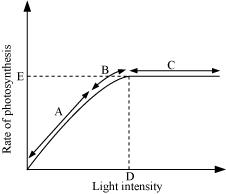Figure 13.10 shows the effect of light on the rate of photosynthesis. Based on the graph, answer the following questions:
(a) At which point/s (A, B or C) in the curve is light a limiting factor?
(b) What could be the limiting factor/s in region A?
(c) What do C and D represent on the curve?

(a) Since the rate of photosynthesis doe not increase with the increase in the incident light therefore light is a limiting factor in the region B.
(b) The other limiting factors may be water, temperature, and the concentration of carbon dioxide.
(c) Point D represents the optimum point and gives the light intensity at which the maximum photosynthesis is recorded.
Ponit c represents the region where the rate of photosynthesis remains constant even after incresing the incident light.
Give comparison between C3 and C4 pathways.